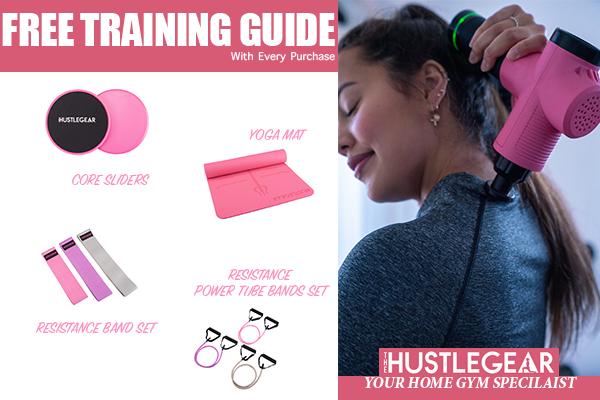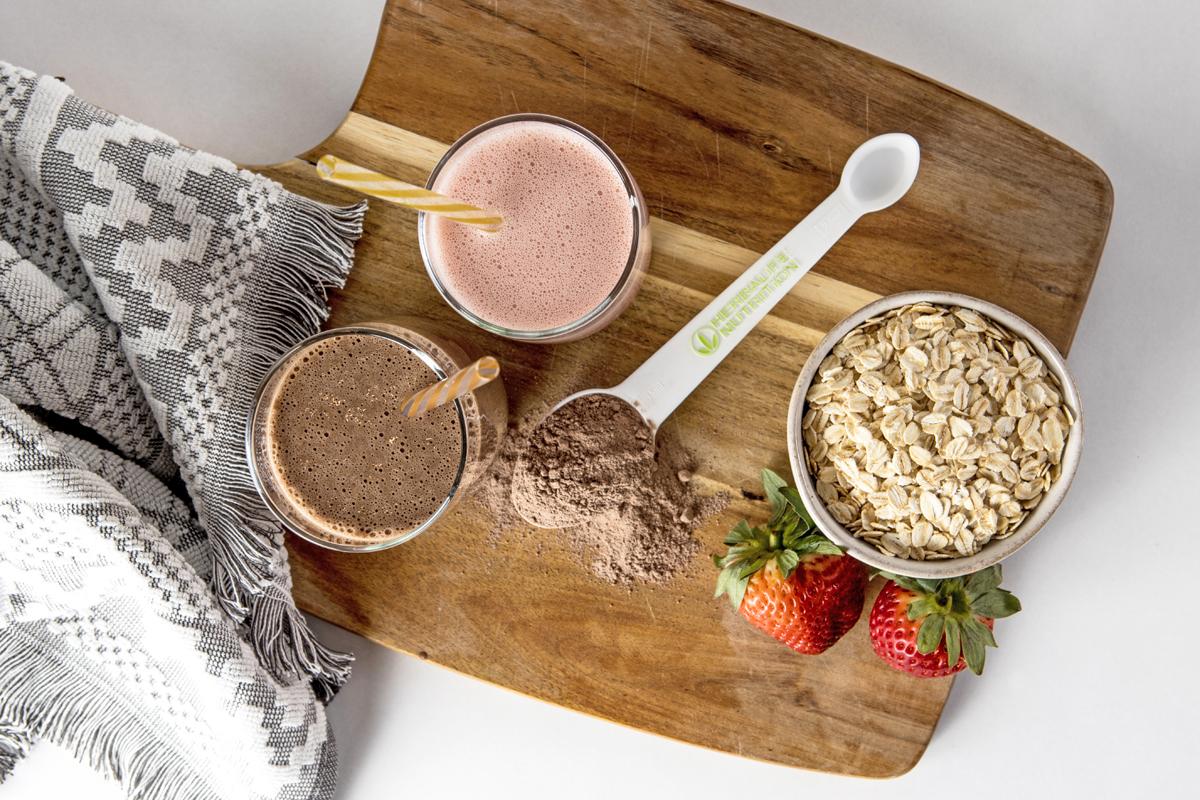
Know something that could keep your neighbours safe?
Share it here on Neighbourly

Thank you for using Neighbourly
Thank You
You may receive an email confirmation for any offer you selected. The associated companies will contact you directly to activate your requests.
Gear up your home gym
Are you working from home and having kids running around at the same time? Feeling like you need some ME time?
YES! Our goal is to make fitness accessible to all busy women and eliminate any constraints that prevent you from living a healthy lifestyle.
No need for gym membership anymore!! … View moreAre you working from home and having kids running around at the same time? Feeling like you need some ME time?
YES! Our goal is to make fitness accessible to all busy women and eliminate any constraints that prevent you from living a healthy lifestyle.
No need for gym membership anymore!! Gear up now and have your personal training guide for FREE with every purchase.
Find out more

Helping kiwi's nutritional habits
For over 30 years we have been proud to support the nutritional habits of New Zealand communities.
With busy and stressful lives, sometimes the food you eat and their nutrients aren't a priority for you, but it is for us.
That's why we provide high-quality, science-based products … View moreFor over 30 years we have been proud to support the nutritional habits of New Zealand communities.
With busy and stressful lives, sometimes the food you eat and their nutrients aren't a priority for you, but it is for us.
That's why we provide high-quality, science-based products that deliver the nutrients your body needs to thrive on a daily basis. Whether you are having it as a meal replacement for weight management or a healthy breakfast, you can have our Formula 1 Nutritional Shake *mix for a healthy dose of nutrients.
*for more information contact your local Herbalife Nutrition Independent Member or visit www.herbalife.com.au/newzealand
Find out more

Introducing our dedicated Neighbourly reporter - Ripu Bhatia
Ripu Bhatia Reporter from Community News
Hey neighbours,
My name is Ripu, I'm Stuff’s newly appointed Neighbourly reporter for Auckland and Northland. I've worked in Stuff's Auckland newsroom for a year and a half now, and previously covered current affairs and politics.
Neighbourly is growing as a popular … View moreHey neighbours,
My name is Ripu, I'm Stuff’s newly appointed Neighbourly reporter for Auckland and Northland. I've worked in Stuff's Auckland newsroom for a year and a half now, and previously covered current affairs and politics.
Neighbourly is growing as a popular tool to access local news and keep in touch with those around us, which we often miss with national media outlets. I'm here to bring you the news closest to you in a role which will work similarly to a community newspaper reporter.
If you have any stories or interesting things happening in your suburb or area, please get in touch!
If you see news posted in your area, please get involved and reply with your comments/thoughts on the issues at hand.
Thanks in advance and I look forward to chatting with you all.
Ripu

Auckland bus trip possible link in Covid-19 cases
Todd Niall Reporter from Auckland Stuff
Hi Neighbours, A commute on an Auckland bus might be the link between a St Lukes mall worker and another Covid-19 case. AT HOP card data might confirm the details. Read the story below:

Free single mattress
Ewa from Avondale
Hi, I have single mattress to give away (10 cm thick). It's made from foam and has removable and washable fabric cover. Not only for sleeping on it but can have other uses like bed for large dog or for kids to play on it instead of sitting on cold floor. If you're interested call or txt … View moreHi, I have single mattress to give away (10 cm thick). It's made from foam and has removable and washable fabric cover. Not only for sleeping on it but can have other uses like bed for large dog or for kids to play on it instead of sitting on cold floor. If you're interested call or txt me on 021 102 3002.
Free
We're growing!
Nicholas Wotton from Service King
Service King is super excited to announce that we're expanding our services catalogue. When you want a job done right (and quickly!) but don't want to waste time ringing contractors and tradies - we've got everything under one roof. From carpet cleaning to water blasting to gardening… View moreService King is super excited to announce that we're expanding our services catalogue. When you want a job done right (and quickly!) but don't want to waste time ringing contractors and tradies - we've got everything under one roof. From carpet cleaning to water blasting to gardening and lawn mowing, check out our website for our services. #ServiceKingDoesEverything !
Whose decision was it to pay a CEO $775,000?
Todd Niall Reporter from Auckland Stuff
Hi Neighbours, If paying Watercare's outgoing CEO $775,000 seems a lot, don't blame him. Do you know who makes that call? Read the story below:

40 replies (Members only)
Who's got more local heroes?
The Team from New Zealander of the Year Award | Ngā Tohu Pou Kōhure o Aotearoa
Hey neighbours,
The clock is ticking! There's just 9 days to nominate Auckland's Local Hero.
Now's the time to celebrate everyday people doing extraordinary things and show the Bay of Plenty that you have more good sorts than them!
Nominate them before Sunday 30 August for … View moreHey neighbours,
The clock is ticking! There's just 9 days to nominate Auckland's Local Hero.
Now's the time to celebrate everyday people doing extraordinary things and show the Bay of Plenty that you have more good sorts than them!
Nominate them before Sunday 30 August for Kiwibank New Zealand Local Hero of the Year. Who's it going to be Auckland?
nzawards.org.nz...

Westpac Warm Up double glazing deals
RetroFit Double Glazing - Auckland Central
For those of you who are Westpac customers and want your home double glazed, check out this great Warm up initiative $10K top up - INTEREST FREE! click here to view more info So don't wait, get your free retrofit double glazing quote from us now click here or call us on 0800 658 658. If … View moreFor those of you who are Westpac customers and want your home double glazed, check out this great Warm up initiative $10K top up - INTEREST FREE! click here to view more info So don't wait, get your free retrofit double glazing quote from us now click here or call us on 0800 658 658. If you're not with Westapc, talk to your banks there’s some pretty competitive rates at the moment.

Be a hero for Kiwi kids
Variety – the Children’s Charity
Become a Hero for Kids for as little as $10 a month and help Kiwi kids with medical and mobility equipment, school needs, extra-curricular opportunities and more.
Sign up today to be a hero at variety.org.nz and make a lasting difference in young lives.
Be a hero

Paint it yellow with Resene for Daffodil Day!
Buy any yellow testpot from your local Resene owned ColorShop between 17-31 August 2020 and Resene will donate $1 to the NZ Cancer Society!
The more yellow testpots you buy, the more will be donated! Offer applies to all retail purchases of Resene yellow testpots (excludes metallics and wood … View moreBuy any yellow testpot from your local Resene owned ColorShop between 17-31 August 2020 and Resene will donate $1 to the NZ Cancer Society!
The more yellow testpots you buy, the more will be donated! Offer applies to all retail purchases of Resene yellow testpots (excludes metallics and wood stains).
Help us make a difference to the health of kiwis.
Shop online or call or email your Resene ColorShop to order.
Find your ColorShop

Cancer doesn't stop...
The Team from Cancer Society Auckland
While our street appeal will no longer take place, we are asking all Aucklanders to support us by donating online.
Just $24 can help pay for a driver to take a cancer patient to and from treatment. Donations can be made here.
Donate now

How far can you go during Covid-19 alert level 3 in Auckland ?
Todd Niall Reporter from Auckland Stuff
Hi Neighbours, Do you REALLY know how far you can drive for a walk or relaxation during Level 3. Auckland Council is sharpening its 'stay local' message after last weekends crowds, Or are they? Read this story :

75 replies (Members only)
Blanket stitch sewing machine wanted
Alison from Mount Albert
Hi - Im wanting to buy a second hand blanket stitch sewing machine. If you have one that is in working order that you'd like to sell can you please contact me . Thanks
Steel Shelves
Jeffrey from Westmere
Good for garage or shed... little bit of rust but good sturdy shelves.
48 Sunny Brae Crescent.... free pick on berm.
Free

 Loading…
Loading…
If you no longer wish to delete the message you can still 'Report the message' for review by the Neighbourly team, or simply 'Hide the message' from being seen on your own newsfeed.
Are you sure? Deleting this message permanently removes it from the Neighbourly website.
 Loading…
Loading…
- Premium Businesses
-
Paramount Gardening Lawnmowing Services

-
Kirstin Collins - Harcourts Mt Albert Real Estate Agents

-
Murray Halberg Retirement Village Retirement Villages

- Community Organisations
-
Red Cross Auckland 33 Lambie Drive, Papatoetoe, Auckland

-
Lions Clubs New Zealand Orewa

- View all organisations
© Neighbourly 2025











